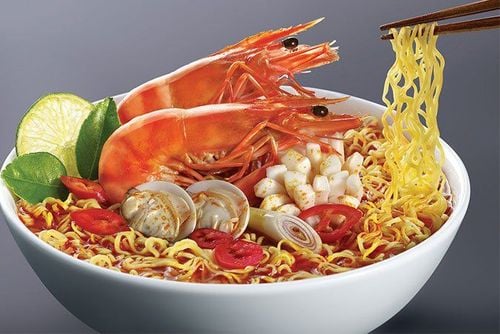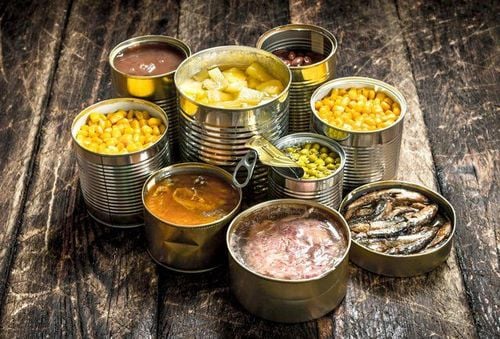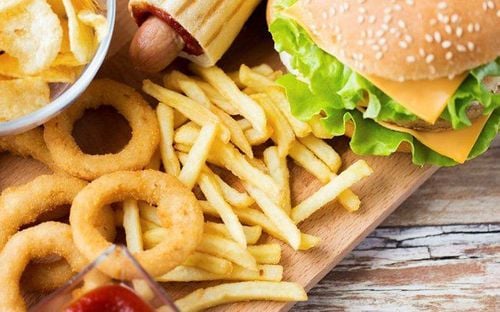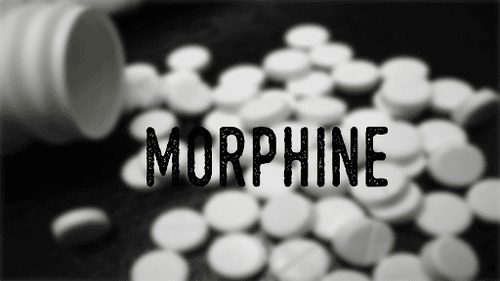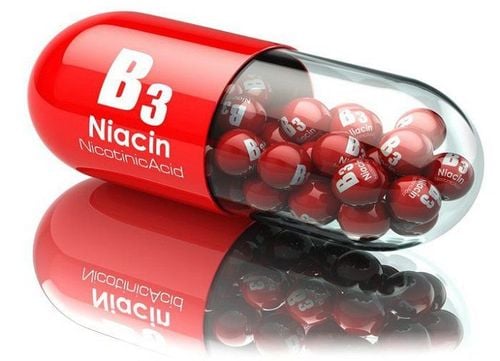This is an automatically translated article.
Processed food will have its natural state and structure changed. This variation depends on processing processes including washing, canning, freezing or adding ingredients to the processed food. In addition, baking, cooking or preparation is also considered a processing step into the finished product.
1. What are processed foods?
Processed food or processed food is simply defined as: the composition and structure of the food has been changed from its original state. That means peanut butter, bread, canned tomatoes, frozen fruit, chopped vegetables, yogurt, and canned tuna are all considered processed foods.
In addition, heating, pasteurization, canning, fermentation and drying are all considered forms of processing to create ready-to-eat foods.
Or some definitions of food processing may even include refrigeration. Cooking at home is a form of preparation. In fact, most foods in the modern diet are processed.
In most cases, food processing must ensure food safety requirements and nutritional ingredients provided to users. For example, milk has been pasteurized for centuries to help keep it safe by reducing the bacterial load, killing pathogenic bacteria such as E.coli, salmonella... and preventing foodborne illnesses. caused product. And more than that, nutrient-fortified foods, can help enhance and improve, resulting in enhanced nutritional value, body health.
Some food products include: milk fortified with vitamin D, salt fortified with iodine, or flour enriched with vitamins and minerals.
2. The benefits of processed foods
2.1. Storage Canning or freezing some fruits and vegetables can help keep them fresh for longer. Pasteurized milk and cheese help prolong their shelf life. Similarly, vacuum packaging can keep meat from spoiling. All of these also help cut down on waste.
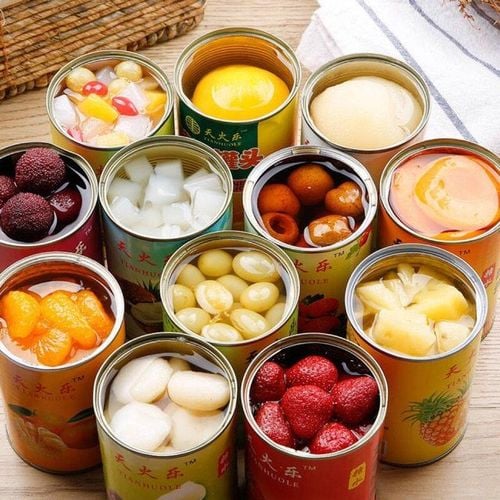
Đóng hộp một số loại trái cây và rau quả có thể giúp chúng tươi lâu
2.2. Eat healthy Washing and bagging vegetables like lettuce and spinach makes it easier to prepare and eat. Canning fruits in water or their own juice preserves freshness and nutrients. Additional ingredients such as fiber, calcium and vitamin D can also be added to make certain foods better for your health.
2.3. Other healthy processed foods In addition to fruits and vegetables, other processed foods that can be part of a healthy diet include tuna and salmon in cans or instant bags, milk sour cream, cheese and roasted nuts.
3. What is fast food?
Processed foods or superfoods have added unhealthy ingredients, intended to make these foods more appealing or to make them last longer. Those ingredients include additives such as salt, sugar, artificial colors, flavors and preservatives.
A few studies show that ultra-processed foods make up about 60% of the calories in the American diet.
4. Unhealthy processed foods
The worst processed foods for your diet are often ready-to-eat and low in nutrients. These include: cookies, sugary drinks, cold cuts and frozen pizzas, savory snacks like chips, and most breakfast cereals. These foods may be delicious but contain many additional ingredients that are not good for you.
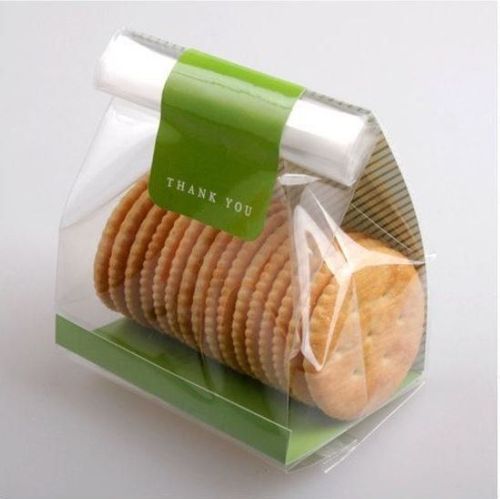
Một số loại đồ ăn sẵn và ít chất dinh dưỡng như bánh quy
5. Ingredients to watch out for in processed foods
5.1. Sodium Sodium is commonly used to keep food fresh. Even if you're careful about the manufacturer adding it to processed foods, it could already be there, thanks to the processing. Americans get nearly 70% of the salt they eat from processed and restaurant foods.
Ways to Control Sodium
You can control the amount of sodium in processed foods by reading food labels. Look for foods that are sodium-free or have been reduced in sodium. Any food with more than 600 milligrams per 100 grams serving is considered high in sodium, while 300 milligrams or less is considered low. Remember that sodium can also go by many different names, like monosodium glutamate or disodium phosphate.
You should also be especially careful with the following foods:
Pizza: A slice with many toppings can give you half of the recommended daily salt intake. Breads and rolls: Even if there isn't much in a piece of bread or a roll. However, the salt content can increase if you eat bread regularly. Sandwiches: A sandwich or fast-food burger can give you your total daily salt intake. Cold cuts and frozen meats: About 6 slices are needed to get half the recommended daily intake. Canned soups: One cup can contain half the salt you need for the day. Burrito and tacos fillings: These meats and cheeses can be loaded with salt. 5.2. Sugar Like salt, sugar is often added during processing. It is used to make food taste better or improve texture. It shows up in things you'd expect, like: cereals and baked goods. But it can also be in things like pasta sauces. Nearly 90% of added sugar in the American diet comes from highly processed foods.
Ways to control the amount of sugar in food:
For salt, you can control your sugar intake by reading the label. For a 2,000-calorie diet (a typical adult diet), you should aim for less than 48 grams of added sugars per day. Check for sugar ingredients in common foods: corn syrup, high fructose, honey, agave nectar, cane sugar, evaporated cane juice, coconut sugar, dextrose, malt syrup, molasses and turbinado sugar.
5.3. Trans fats Found in processed foods like baked goods, salty snacks, and margarines, trans fats can affect your cholesterol and lead to disease-related inflammation. heart disease, stroke and other diseases. Recent government rulings have made trans fats increasingly difficult to find in foods. However, you should still read labels when choosing processed foods: a fat content greater than 5 grams per 100 grams serving is high. Even if a product's label says it has 0 grams of trans fat, and it may have up to 0.5 grams of that fat, the ingredient will still contain trans fat.

Chất béo chuyển hóa được tìm thấy trong bơ thực vật và có thể ảnh hưởng đến cholesterol của bạn
6. Some tips to limit bad ingredients when using processed foods 6.1. Cooking at home Preparing your own food allows you to decide the ingredients and amount of substances in your meals. If you don't have time or don't have the cooking skills, frozen meals can also be used.
Although, food processing companies have minimized the ingredients that are not healthy. But what's more important is that you should still read food labels for detailed information about the food you're about to use
6.2. When you eat out Although when you eat out, you won't have as much control over the nutritional composition of your food as you do at home, there are a few things you can do to avoid over-processed foods when you go out. For example, you can ask your waiter what dishes are made at the restaurant and do not use prepackaged foods. You can also request bottled marinades, sauces or condiments to be served separately from the main dish.
Please dial HOTLINE for more information or register for an appointment HERE. Download MyVinmec app to make appointments faster and to manage your bookings easily.
Reference article source: webmd.com




